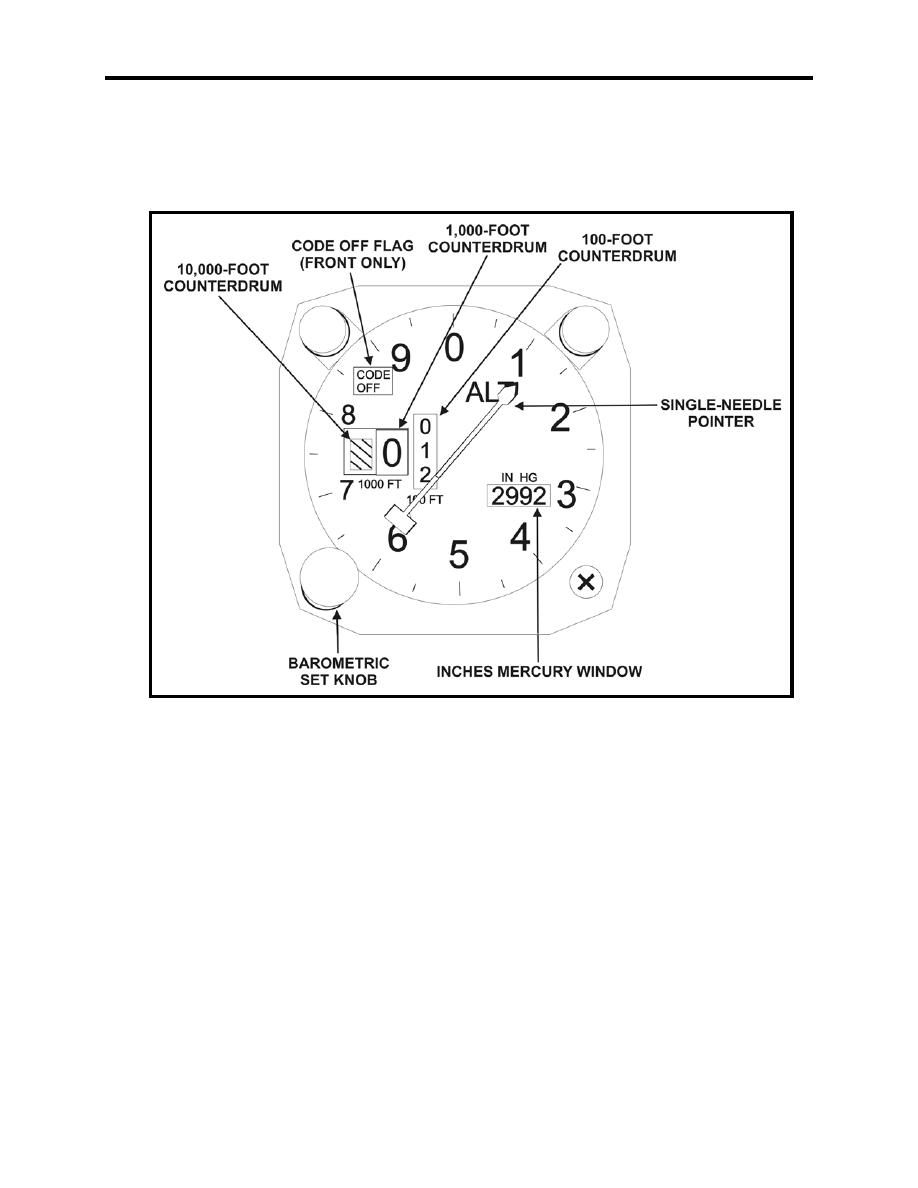 |
|||
|
|
|||
|
Page Title:
Barometric Altimeter (AFT Cockpit) |
|
||
| ||||||||||
|
|  CHAPTER ONE
T-34C INSTRUMENTS
immediately indicate a change of altitude. In addition, if an aircraft has been in a descent and
makes a transition to a climb, the altimeter will momentarily continue to indicate a descent with
the aircraft in a climbing attitude. The foregoing is one basic reason for transitioning exclusively
on the attitude gyro. A complete description of this system can be found in NATOPS.
Figure 13 Altimeter
3.
Barometric Altimeter (AFT Cockpit)
The barometric altimeter and encoding altimeter (Figure 13) function identically as an attitude
crosscheck or performance instrument. The only difference is that the barometric altimeter lacks
the circuitry to provide altitude information to the transponder. A complete description of this
system can be found in NATOPS.
4.
Vertical Speed Indicator
a.
The vertical speed indicator (VSI) (Figure 14) measures the rate of change of
altitude. It is activated by the differential of static air pressures between ambient and
internal instrument air, which is permitted to equalize through a metered air flow
orifice in the instrument. This differential is indicated by the pointer on the face of
the instrument and calibrated in terms of the rate at which the altitude is changing
during a climb or descent. Refer to NATOPS for additional information.
1-6 INTRODUCTION TO BASIC INSTRUMENTS
|
|
Privacy Statement - Press Release - Copyright Information. - Contact Us |